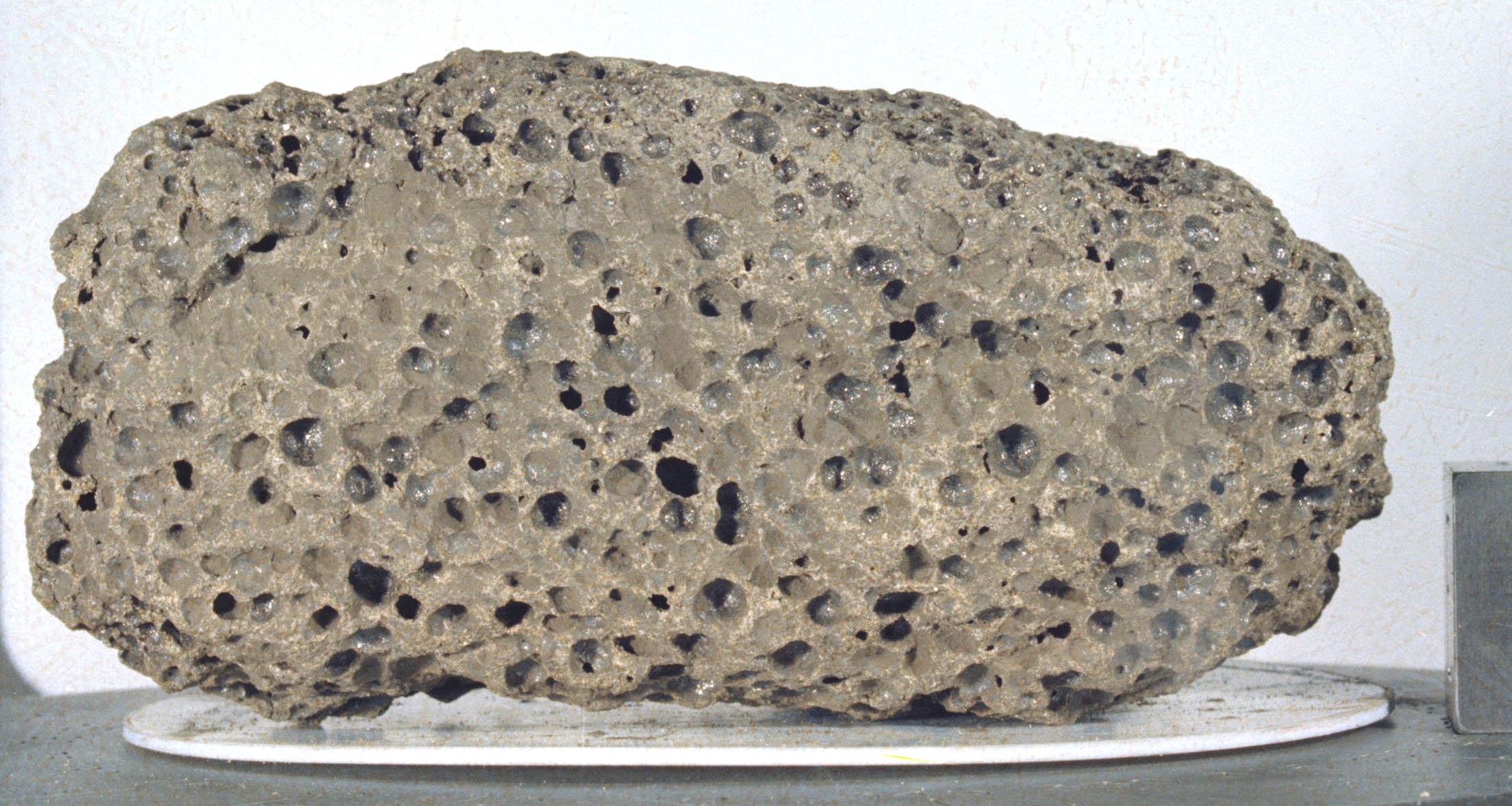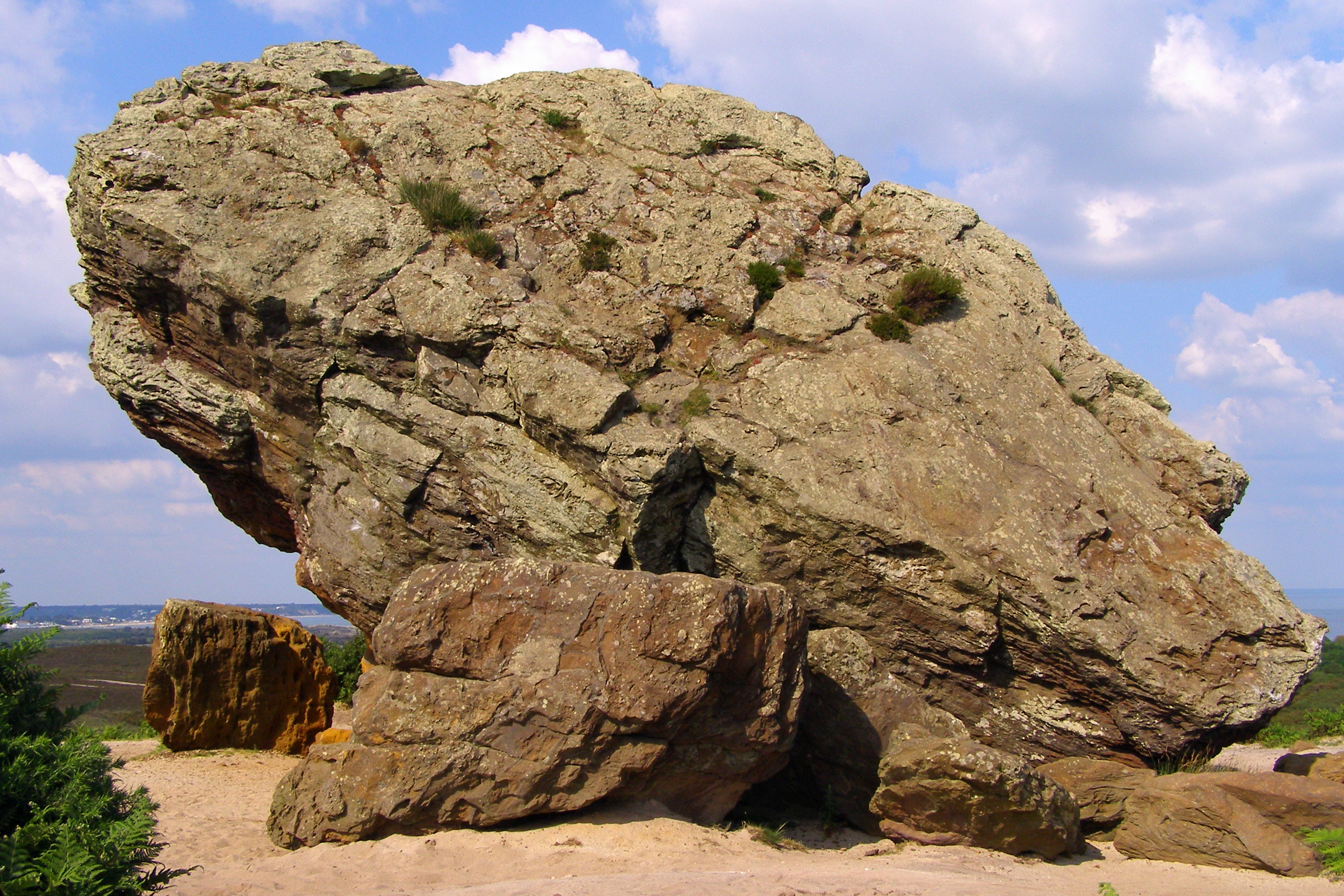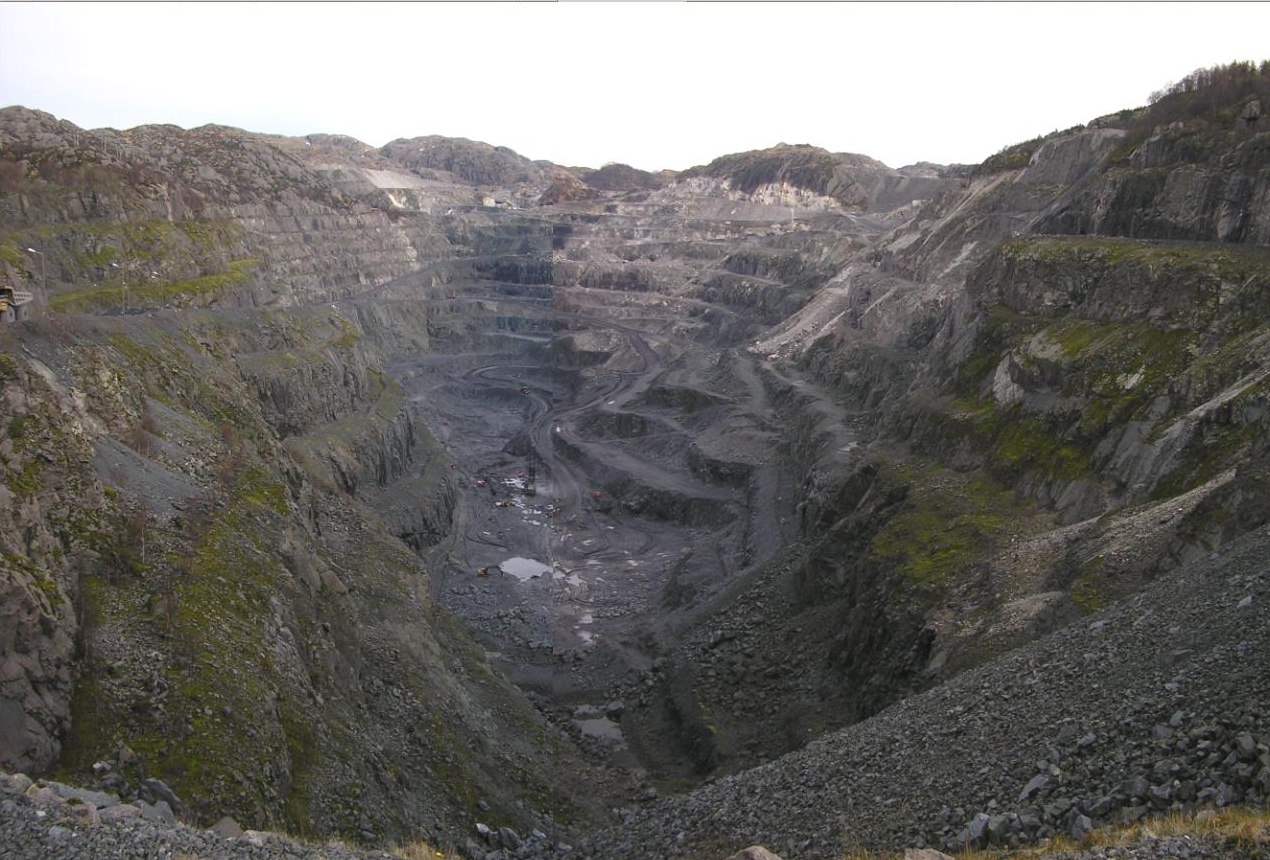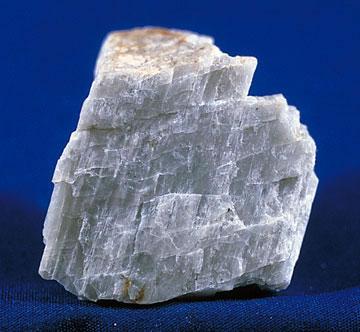|
Seatbelt Basalt
Lunar Sample 15016, better known as the "Seatbelt Basalt", is a Moon rock, lunar sample discovered and collected on the Apollo 15 mission in 1971 in the Hadley-Apennine region of the Moon. The rock is a vesicular olivine basalt. It is so named because mission commander, David Scott, noticed it on the surface while driving the Lunar Roving Vehicle and stopped to collect it, but said to mission control that he was just fastening his seatbelt. He did this because he assumed mission control would not give permission to stop for a sample collection due to time constraints. This unplanned stop was later designated Geology Station 3, located about west of Rhysling (crater), Rhysling crater. This sample was collected from an area with abundant subdued craters between in diameter. The sample is a very vesicular basalt, rounded by surface erosion. Lithologically, it closely resembles samples 15535 and 15536, as well as a number of fragments in the rake samples from station 9A. The sea ... [...More Info...] [...Related Items...] OR: [Wikipedia] [Google] [Baidu] |
Lunar Sample 15016 S71-45477
Lunar most commonly means "of or relating to the Moon". Lunar may also refer to: Arts and entertainment * Lunar (series), ''Lunar'' (series), a series of video games * Lunar (song), "Lunar" (song), by David Guetta * "Lunar", a song by Priestess from the 2009 album ''Prior to the Fire'' * Lunar Drive-in Theatre, in Dandenong, Victoria, Australia * Lunars, a fictional race in the series ''The Lunar Chronicles'' by Marissa Meyer Other uses * Lunar dynasty, a legendary house of warrior–rulers in ancient Indian texts * Lunar Magic, Super Mario World level editor * Lunar Design, or LUNAR, a San Francisco-based design consultancy * Hasselblad Lunar, a digital camera * Lunar, a brandname of Ethinylestradiol/cyproterone acetate, a birth control pill * Lunar C (Jake Brook, born 1990), English rapper * LUNAR (software) (1970–1972), question-answering system by Bill Woods (computer scientist) See also * * * Lunar calendar, based upon the monthly cycles of the Moon's phase ** Lunar ... [...More Info...] [...Related Items...] OR: [Wikipedia] [Google] [Baidu] |
National Air And Space Museum
The National Air and Space Museum (NASM) of the Smithsonian Institution is a museum in Washington, D.C., in the United States, dedicated to history of aviation, human flight and space exploration. Established in 1946 as the National Air Museum, its main building opened on the National Mall near L'Enfant Plaza in 1976. In 2023, the museum welcomed 3.1 million visitors, making it the list of most-visited museums in the United States, fourth-most visited museum in the United States and List of most-visited museums, eleventh-most in the world. The museum is a center for research into the history and science of aviation and spaceflight, as well as planetary science and terrestrial geology and geophysics. Almost all of its spacecraft and aircraft on display are original primary or backup craft (rather than facsimiles). Its collection includes the Apollo 11 Command module Columbia, Command Module ''Columbia'', the Mercury-Atlas 6, ''Friendship 7'' capsule which was flown by John Glenn, ... [...More Info...] [...Related Items...] OR: [Wikipedia] [Google] [Baidu] |
Lunar Samples
Lunar most commonly means "of or relating to the Moon". Lunar may also refer to: Arts and entertainment * ''Lunar'' (series), a series of video games * "Lunar" (song), by David Guetta * "Lunar", a song by Priestess from the 2009 album ''Prior to the Fire'' * Lunar Drive-in Theatre, in Dandenong, Victoria, Australia * Lunars, a fictional race in the series ''The Lunar Chronicles'' by Marissa Meyer Other uses * Lunar dynasty, a legendary house of warrior–rulers in ancient Indian texts * Lunar Magic, Super Mario World level editor * Lunar Design, or LUNAR, a San Francisco-based design consultancy * Hasselblad Lunar, a digital camera * Lunar, a brandname of Ethinylestradiol/cyproterone acetate, a birth control pill * Lunar C (Jake Brook, born 1990), English rapper * LUNAR (software) (1970–1972), question-answering system by Bill Woods (computer scientist) See also * * * Lunar calendar, based upon the monthly cycles of the Moon's phase ** Lunar day, in such calendars ** Lunar ... [...More Info...] [...Related Items...] OR: [Wikipedia] [Google] [Baidu] |
List Of Individual Rocks
The following is a list of notable rocks and stones. See also * List of largest meteorites on Earth * List of longest natural arches * List of rock formations * List of rock formations that resemble human beings * List of rocks on Mars * Lists of rocks in Western Australia * List of menhirs, List of standing stones * Monoliths * Moon rocks * Stolen and missing Moon rocks * Stones of Scotland * Glacial erratic **Glacial erratic boulders of Estonia, of Estonia **Glacial erratics on and around Rügen, of Rügen **of Washington (state), Washington State, United States ***Glacial erratic boulders of Island County, Washington, of Island County, Washington ***Glacial erratic boulders of King County, Washington, of King County, Washington ***Glacial erratic boulders of Kitsap County, Washington, of Kitsap County, Washington ***Glacial erratic boulders of Snohomish County, Washington, of Snohomish County, Washington ***Glacial erratic boulders of the Puget Sound region, of the Puget Sound ... [...More Info...] [...Related Items...] OR: [Wikipedia] [Google] [Baidu] |
Radiometric Dating
Radiometric dating, radioactive dating or radioisotope dating is a technique which is used to Chronological dating, date materials such as Rock (geology), rocks or carbon, in which trace radioactive impurity, impurities were selectively incorporated when they were formed. The method compares the abundance of a naturally occurring Radionuclide, radioactive isotope within the material to the abundance of its Radioactive decay, decay products, which form at a known constant rate of decay. Radiometric dating of minerals and rocks was pioneered by Ernest Rutherford (1906) and Bertram Boltwood (1907). Radiometric dating is now the principal source of information about the Absolute dating, absolute age of rocks and other Geology, geological features, including the age of Paleontology, fossilized life forms or the age of Earth itself, and can also be used to date a wide range of natural and Artifact (archaeology), man-made materials. Together with stratigraphy, stratigraphic principles, ra ... [...More Info...] [...Related Items...] OR: [Wikipedia] [Google] [Baidu] |
Rubidium–strontium Dating
The rubidium–strontium dating method (Rb–Sr) is a radiometric dating technique, used by scientists to determine the age of rocks and minerals from their content of specific isotopes of rubidium (87Rb) and strontium (87Sr, 86Sr). One of the two naturally occurring isotopes of rubidium, 87Rb, decays to 87Sr with a half-life of 49.23 billion years. The radiogenic daughter, 87Sr, produced in this decay process is the only one of the four naturally occurring strontium isotopes that was not produced exclusively by stellar nucleosynthesis predating the formation of the Solar System. Over time, decay of 87Rb increases the amount of radiogenic 87Sr while the amount of other Sr isotopes remains unchanged. The ratio 87Sr/86Sr in a mineral sample can be accurately measured using a mass spectrometer. If the amount of Sr and Rb isotopes in the sample when it formed can be determined, the age can be calculated from the increase in 87Sr/86Sr. Different minerals that crystallized from the sam ... [...More Info...] [...Related Items...] OR: [Wikipedia] [Google] [Baidu] |
Cosmic Ray
Cosmic rays or astroparticles are high-energy particles or clusters of particles (primarily represented by protons or atomic nuclei) that move through space at nearly the speed of light. They originate from the Sun, from outside of the Solar System in our own galaxy, and from distant galaxies. Upon impact with Earth's atmosphere, cosmic rays produce showers of secondary particles, some of which reach the surface, although the bulk are deflected off into space by the magnetosphere or the heliosphere. Cosmic rays were discovered by Victor Hess in 1912 in balloon experiments, for which he was awarded the 1936 Nobel Prize in Physics. Direct measurement of cosmic rays, especially at lower energies, has been possible since the launch of the first satellites in the late 1950s. Particle detectors similar to those used in nuclear and high-energy physics are used on satellites and space probes for research into cosmic rays. Data from the Fermi Space Telescope (2013) have ... [...More Info...] [...Related Items...] OR: [Wikipedia] [Google] [Baidu] |
Ulvöspinel
Ulvöspinel or ulvite is an iron titanium oxide mineral with formula: Fe2 Ti O4 or TiFe2+2O4. It forms brown to black metallic isometric crystals with a Mohs hardness of 5.5 to 6. It belongs to the spinel group of minerals, as does magnetite, Fe3O4. Ulvöspinel forms as solid solutions with magnetite at high temperatures and reducing conditions, and grains crystallized from some basalt-gabbro magmas are rich in the ulvöspinel component. The ulvöspinel component tends to oxidize to magnetite plus ilmenite during subsolidus cooling of the host rocks, and the ilmenite so produced may form apparent exsolution (trellis type) laminae in magnetite. The texture was once interpreted as indicating solid solution between ilmenite and magnetite, until the oxidation reaction and resultant textures were reproduced in laboratory experiments first described by Buddington and Lindsley (1964, ''Journal of Petrology'' 5, p. 310–357). The results are important to plate tectonics because magne ... [...More Info...] [...Related Items...] OR: [Wikipedia] [Google] [Baidu] |
Ilmenite
Ilmenite is a titanium-iron oxide mineral with the idealized formula . It is a weakly magnetic black or steel-gray solid. Ilmenite is the most important ore of titanium and the main source of titanium dioxide, which is used in paints, printing inks, fabrics, plastics, paper, sunscreen, food and cosmetics. Structure and properties Ilmenite is a heavy (specific gravity 4.7), moderately hard (Mohs hardness 5.6 to 6), opaque black mineral with a submetallic luster. It is almost always massive, with thick tabular crystals being quite rare. It shows no discernible cleavage, breaking instead with a conchoidal to uneven fracture. Ilmenite crystallizes in the trigonal system with space group ''R''. The ilmenite crystal structure consists of an ordered derivative of the corundum structure; in corundum all cations are identical but in ilmenite Fe2+ and Ti4+ ions occupy alternating layers perpendicular to the trigonal c axis. Pure ilmenite is paramagnetic (showing only very weak ... [...More Info...] [...Related Items...] OR: [Wikipedia] [Google] [Baidu] |
Plagioclase
Plagioclase ( ) is a series of Silicate minerals#Tectosilicates, tectosilicate (framework silicate) minerals within the feldspar group. Rather than referring to a particular mineral with a specific chemical composition, plagioclase is a continuous solid solution series, more properly known as the plagioclase feldspar series. This was first shown by the German mineralogist Johann F. C. Hessel, Johann Friedrich Christian Hessel (1796–1872) in 1826. The series ranges from albite to anorthite endmembers (with respective compositions NaAlSi3O8 to CaAl2Si2O8), where sodium and calcium atoms can substitute for each other in the mineral's crystallography, crystal lattice structure. Plagioclase in hand samples is often identified by its polysynthetic crystal twinning or "phonograph record, record-groove" effect. Plagioclase is a major constituent mineral in Earth's crust and is consequently an important diagnostic tool in petrology for identifying the composition, origin and evolutio ... [...More Info...] [...Related Items...] OR: [Wikipedia] [Google] [Baidu] |
Pyroxene
The pyroxenes (commonly abbreviated Px) are a group of important rock-forming inosilicate minerals found in many igneous and metamorphic rocks. Pyroxenes have the general formula , where X represents ions of calcium (Ca), sodium (Na), iron (Fe(II)) or magnesium (Mg) and more rarely zinc, manganese or lithium, and Y represents ions of smaller size, such as chromium (Cr), aluminium (Al), magnesium (Mg), cobalt (Co), manganese (Mn), scandium (Sc), titanium (Ti), vanadium (V) or even iron (Fe(II) or Fe(III)). Although aluminium substitutes extensively for silicon in silicates such as feldspars and amphiboles, the substitution occurs only to a limited extent in most pyroxenes. They share a common structure consisting of single chains of silica tetrahedra. Pyroxenes that crystallize in the monoclinic system are known as clinopyroxenes and those that crystallize in the orthorhombic system are known as orthopyroxenes. The name ''pyroxene'' is derived from the Ancient Greek w ... [...More Info...] [...Related Items...] OR: [Wikipedia] [Google] [Baidu] |
Phenocryst
image:montblanc granite phenocrysts.JPG, 300px, Granites often have large feldspar, feldspathic phenocrysts. This granite, from the Switzerland, Swiss side of the Mont Blanc massif, has large white phenocrysts of plagioclase (that have trapezoid shapes when cut through). 1 euro coin (diameter 2.3 cm) for scale. A phenocryst is an early forming, relatively large and usually conspicuous crystal distinctly larger than the grains of the rock Matrix (geology), groundmass of an igneous rock. Such rocks that have a distinct difference in the size of the crystals are called Porphyry (geology), porphyries, and the adjective porphyritic is used to describe them. Phenocrysts often have euhedral forms, either due to early growth within a magma, or by post-emplacement recrystallization (geology), recrystallization. Normally the term ''phenocryst'' is not used unless the crystals are directly observable, which is sometimes stated as greater than in diameter. Phenocrysts below this level, but s ... [...More Info...] [...Related Items...] OR: [Wikipedia] [Google] [Baidu] |






